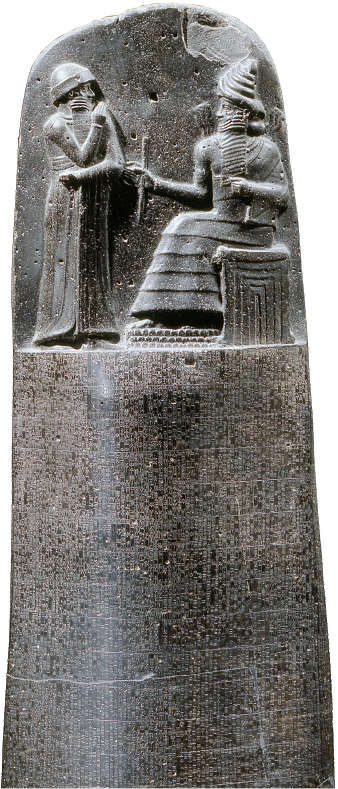Life Under Hammurabi

Hammurabi’s most memorable accomplishment was the proclamation of an extensive law code, introduced about 1755 B.C.E. Hammurabi’s law code set a variety of punishments for breaking the law, including fines and physical punishment such as mutilation, whipping, and burning. It demanded that the punishment fit the crime, calling for “an eye for an eye and a tooth for a tooth,” at least among social equals, although higher-
Hammurabi’s code provides a wealth of information about daily life in Mesopotamia. Because of farming’s fundamental importance, the code dealt extensively with agriculture. Tenants faced severe penalties for neglecting the land or not working it at all. The code also regulated other trades, and artisans had to guarantee the quality of their goods and services to consumers. Hammurabi gave careful attention to marriage and the family. As elsewhere in the area, marriage had aspects of a business agreement. The groom or his father offered the prospective bride’s father a gift, and if this was acceptable, the bride’s father provided his daughter with a dowry, which technically remained hers. A father could not disinherit a son without just cause, and the code ordered the courts to forgive a son for his first offense. On family matters and other issues, Hammurabi’s code influenced other law codes, including those later written down in Hebrew Scripture (see “The Jewish Religion”).
>QUICK REVIEW
What role did kings play in Mesopotamian society? What about priests?